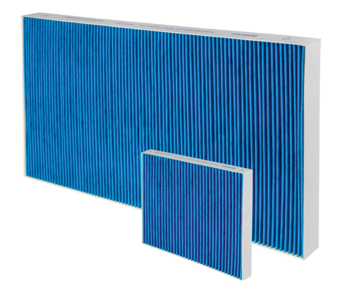What’s under the hood?
How electric vehicles will provide a healthier ride in the future
The mobility transformation is in full swing. It’s going to turn lots of things on their heads, which is good news for vehicle cabin air quality.
There has been an undeniable change in attitude towards electric cars in numerous countries worldwide in recent years.
This is most visible in the steadily rising sales figures.1 One in five new cars registered in EU member states has an electric drive.2 Consumers and manufacturers are taking climate change and need to drastically reduce CO2 emissions in the next few years seriously. Many car manufacturers have set themselves ambitious goals in terms of climate neutrality and are committed to a completely emission-free value chain from the supplier to the point of use. This means that the entire vehicle portfolio must be made climate-neutral and the main way to achieve this is by using electric drives. International efforts are underway to completely ban the production and sale of models with combustion engines.
This is confirmed by a McKinsey report, which predicts that by 2035 almost 100 percent of all vehicles sold on the world’s largest markets (Europe, China and the USA) will be electric.3
A fast-changing field full of challenges ...
This is the biggest structural change the automotive industry (and its entire chain of suppliers) has ever faced. The transformation will force many companies to adapt their business and will also herald new market players. Jobs will be lost in many areas and many new jobs created in others.
There will also be an infrastructure transition. Public and commercial car charging stations are springing up all over the place: cities, parking lots, and highway rest areas. Gas stations around the world will also have to adapt the e-car market in the coming decades.
... and opportunities
First things first: fewer exhaust fumes and emissions from combustion engines means inner city pollution and environmental pollution in general will decrease. In the future, both air quality and quality of life will increase, especially in densely populated cities. As vehicles are digitalized, larger numbers of intelligent assistance systems will help make traffic safer — saving countless lives. But electromobility decisively turn the focus towards well-being in the car. Taking the combustion engine out of the equation opens up entirely new ways for designers and engineers to approach the issue of clean indoor air. Cabin air filters no longer need to be designed for a tiny installation space and then squeezed in somewhere. Instead, they can take up the room they require for optimum performance.
Time to breathe
This is good news, as customer demands will continue to increase and air pollution will continue to be an issue. Even with fewer internal combustion vehicles on the roads, fine dust will remain in the air as a result of tire wear and brake dust, industrial plants, and private households.
Climate change also increases the risk of smog and leads to more pollen in the air. Those who suffer from allergies and respiratory diseases therefore still need to be on alert. Customers will be more aware of the issue of air purity, and health considerations will increasingly affect their purchasing decisions.

Reliable protection is available now
Modern cabin air filters offer reliable protection not only against fine dust and pollen, but also against bacteria, viruses and airborne allergens.
This is a decisive factor for those who suffer from allergies, who now make up around a third of the total population. It’s also a decisive factor for anyone who takes advantage of the huge increase in car-sharing and ride-sharing. These services require solutions for keeping indoor air as free of pathogens as possible. In addition, integrated activated carbon layers adsorb bad odors and contaminant gases. This is particularly relevant during heat waves, during which smog and increased ozone exposure could otherwise cause headaches and dizziness.

Room for manufacturers to set themselves apart
Most modern vehicles have numerous features that ensure driving comfort. These include heating, voice control, or lane guidance. Cabin air filters have been rather neglected in this respect. But the new spatial conditions in electric cars are causing a rethink. Designers and engineers can take advantage of this new freedom to make huge improvements to the quality of interior air by using larger filter elements. The race is on for producers to turn air quality into a distinguishing feature of vehicles.
Are you looking for a partner who provides innovative filter solutions for even the most challenging applications?

Sources:
1 https://www.iea.org/reports/global-ev-outlook-2022/executive-summary
2 https://www.eea.europa.eu/ims/new-registrations-of-electric-vehicles
3 https://www.mckinsey.com/industries/automotive-and-assembly/our-insights/future-mobility-2022-hype-transitions-into-reality
https://www.mckinsey.com/industries/automotive-and-assembly/our-insights/mobilitys-net-zero-transition-a-look-at-opportunities-and-risks
https://www.mckinsey.com/industries/automotive-and-assembly/our-insights/why-the-automotive-future-is-electric
https://www.climatepartner.com/de/climate-action-insights/was-bedeutet-net-zero-wirklich
 automotive filtration insight
automotive filtration insight